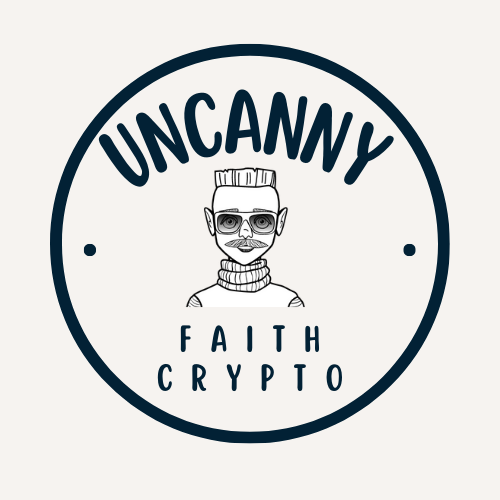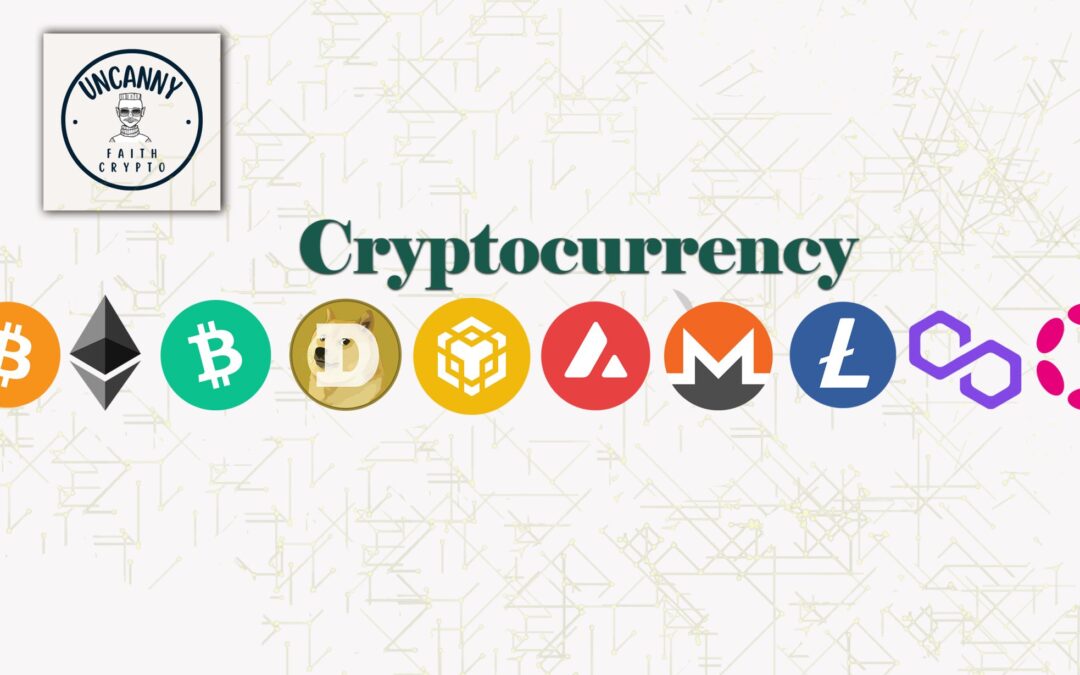
by uncannyfaith | Jan 1, 2025 | Blockchain technology, crypto, Cryptocurrency, Cryptocurrency news and updates, Investing and trading tips
In an era where digital privacy and data security converge with the explosive growth of blockchain technology, Secret Network continues to dominate the conversation. Renowned for being the first blockchain with privacy-preserving smart contracts, Secret Network has become a pivotal force in reshaping how decentralised applications (dApps) operate in a world that values both transparency and confidentiality.
Fast forward to 2025, and privacy on the blockchain has evolved from being a luxury to a necessity. The Secret Network ecosystem has matured substantially, shaping the industry’s future and influencing key trends. But what exactly does this mean for businesses, developers, and everyday users? What will privacy on the blockchain look like in 2025, and how can Secret Network address these challenges and opportunities?
In this comprehensive article, we’ll explore the latest trends, cutting-edge innovations, and forward-looking predictions for Secret Network in 2025, along with actionable insights to help you stay ahead of the curve.
What is Secret Network?
Before diving into the trends and predictions for 2025, let’s start with the basics for those new to the concept. Secret Network is a blockchain designed for privacy-preserving smart contracts. Unlike traditional blockchains like Ethereum, where all transaction data and smart contract records are publicly accessible, Secret Network uses encrypted inputs, outputs, and states.
This encryption ensures that sensitive data remains private, enabling a variety of use cases—including decentralised finance (DeFi), NFTs (non-fungible tokens), and healthcare applications—without compromising user privacy. The key differentiator? Secret Network strikes a balance between privacy and utility, complementing blockchain transparency without exposing sensitive data to prying eyes.
The Importance of Privacy in Blockchain Today
Data breaches, mass surveillance, cybercrime—these are no longer abstract threats but everyday realities. In the blockchain world, where digital transparency is the standard, privacy has become an essential pillar for innovation and trust.
But why does this matter so much in 2025?
For one, industries ranging from healthcare to financial services are adopting blockchain for its decentralisation and transparency. However, without privacy protections, blockchain applications risk violating data regulations like GDPR (General Data Protection Regulation) in Europe or the California Consumer Privacy Act in the US. More businesses are waking up to this reality, leading them to explore privacy-preserving technologies like Secret Network.
Key Use Cases Driving Privacy Adoption
- DeFi Privacy: As decentralised finance dominates the crypto space, privacy is crucial for institutional investors who need anonymity in their transactions.
- Healthcare Applications: Blockchain can manage sensitive patient data efficiently, but privacy protocols ensure compliance with strict regulations.
- Privacy-Preserving NFTs: Secret NFTs allow artists, collectors, and businesses to control their metadata, royalties, and ownership rights without exposing sensitive details.
- Web3 and DAOs: Privacy in Decentralised Autonomous Organisations (DAOs) ensures governance rights and participant data remain confidential.
As we advance, Secret Network’s role in addressing these needs will only grow.
Trends that Will Shape Secret Network in 2025
The privacy-oriented blockchain ecosystem is evolving rapidly, and Secret Network is well-positioned to lead the charge. Here are some emerging trends we anticipate in 2025:
1. Privacy as Standard in Web3 Applications
In 2025, privacy-first principles will underpin the development of countless Web3 protocols. While traditional blockchains like Ethereum and Solana focus heavily on scalability, users and developers will increasingly gravitate toward ecosystems that embed privacy into the DNA of their operations. Secret Network, with its history of privacy-orientated innovation, is poised to become the go-to solution.
Expect to see:
- Privacy SDKs: Toolkits enabling developers to integrate privacy functionalities into dApps seamlessly.
- Invisible Transactions: Encrypted payment layers that allow users to transact without exposing sensitive details.
2. Institutional Participation in Privacy-Preserving DeFi
Institutional investors have long been wary of entering DeFi because of transparency concerns. Secret Network addressees these issues with its privacy-preserving DeFi infrastructure. By 2025, we can expect large-scale adoption of Secret-based DeFi projects that offer the anonymity and security institutional investors demand.
For example, products like SecretSwap and Shade Protocol, which debuted on Secret Network, will likely evolve into robust financial ecosystems accessible to both retail users and professional institutions.
3. Rise of Privacy-Preserving Metaverses
The metaverse represents an extensive new frontier for blockchain technology, but its sustainability hinges on balancing transparency and privacy. In the metaverse, users generate vast amounts of personal data, from location tracking to spending habits. Secret Network creates a foundation where this data can remain encrypted and user-controlled.
By 2025, Secret Network might power entire Web3 metaverses where:
- Users can manage digital identities privately using zero-knowledge proofs.
- In-game transactions remain confidential.
- Centralised metaverse companies face competition from decentralised and privacy-respecting ecosystems.
4. Enhanced Cross-Chain Privacy
Interoperability has been a big buzzword in recent years, but cross-chain privacy will take centre stage in 2025. Secret Network’s secret bridges, which enable private transactions across networks like Ethereum and Binance Smart Chain, will expand significantly.
This will lead to:
- Greater integration with blockchain ecosystems like Polkadot and Cosmos.
- Increased adoption of privacy-preserving NFTs across multiple blockchains.
5. Regulatory Compliance Without Overexposure
Privacy networks often walk a fine line with regulatory bodies. While decentralisation and privacy are core advantages, regulators prioritise compliance with laws like anti-money laundering (AML) protocols. Secret Network, by combining selective transparency with secure encryption, will likely emerge as a leader in solutions that comply with regulations while respecting user confidentiality.
Predictions for the Future of Secret Network
As we look toward 2025, here are bold predictions for how Secret Network could evolve:
1. Widespread Adoption of Secret Contracts: Expect more mainstream companies to adopt Secret Network’s smart contracts to build private yet scalable applications. Tech firms, financial institutions, and even healthcare providers will utilise Secret Network for privacy-by-design solutions.
2. Governance Evolution: Decentralised governance on Secret Network will become mature with innovative, privacy-centred DAOs. In these DAOs, voting and decision-making processes leverage encrypted mechanisms to guarantee participant confidentiality.
3. AI and Blockchain Convergence: The integration of artificial intelligence (AI) with privacy-preserving blockchains will lead to groundbreaking applications. Think private predictive analytics, decentralised AI marketplaces, or secret AI models that protect intellectual property.
Challenges for Secret Network
While the future looks promising, no innovation is without its hurdles. In 2025, the Secret Network community will face ongoing challenges:
- Scalability: Will Secret Network scale effectively to compete with faster, more scalable chains like Solana or Avalanche?
- Regulatory Scrutiny: Governments may impose tighter restrictions on privacy-focused blockchains if they perceive them as facilitators for illicit activities.
- Interoperability Pressure: Bridging the gap between Secret Network and rising layer-1 ecosystems will require significant effort in development and marketing.
Staying agile and collaborative will be key to overcoming these obstacles.
How to Get Involved in Secret Network’s Ecosystem
By now, you’re aware of how exciting the future looks for Secret Network. Whether you’re an investor, developer, or crypto enthusiast, here are a few actionable ways to participate:
- Invest in SCRT (Secret Network’s Native Token): SCRT is the backbone of the Secret Network, and early adoption could yield significant rewards. Check popular exchanges like Binance to get started.
- Develop on Secret Network: Utilise Secret Network’s tools and SDKs to build privacy-preserving dApps.
- Join Communities or Run a Node: Engage with the Secret Network community on Telegram, Discord, or Twitter, or even run a node to secure the network and earn rewards.
FAQ
Q: What makes Secret Network unique in the blockchain world?
A: Secret Network encrypts data in smart contracts, ensuring both functionality and privacy—a stark contrast to open ledgers like Ethereum.
Q: What industries can benefit most from Secret Network?
A: Financial services, healthcare, Web3 projects, metaverse platforms, and decentralised governance are key beneficiaries.
Q: Is Secret Network scalable enough for mass adoption?
A: While scalability remains an ongoing challenge, improvements in infrastructure and partnerships are helping Secret Network prepare for mass adoption.
Final Thoughts
As the digital world grows increasingly complex, privacy will no longer be an option but an expectation. In 2025, Secret Network stands as a leading force in making privacy accessible, sustainable, and innovative for Web3 users worldwide.
From empowering DeFi to securing metaverses, Secret Network is shaping the future of privacy in blockchain, step by step. Now is the perfect time to get involved in this transformational movement, as businesses, developers, and users increasingly demand a world where privacy is preserved in a transparent era.
Whether you’re an investor or dApp developer, the opportunities within Secret Network’s ecosystem in 2025 are boundless. Let’s embrace this exciting future—privately, of course.
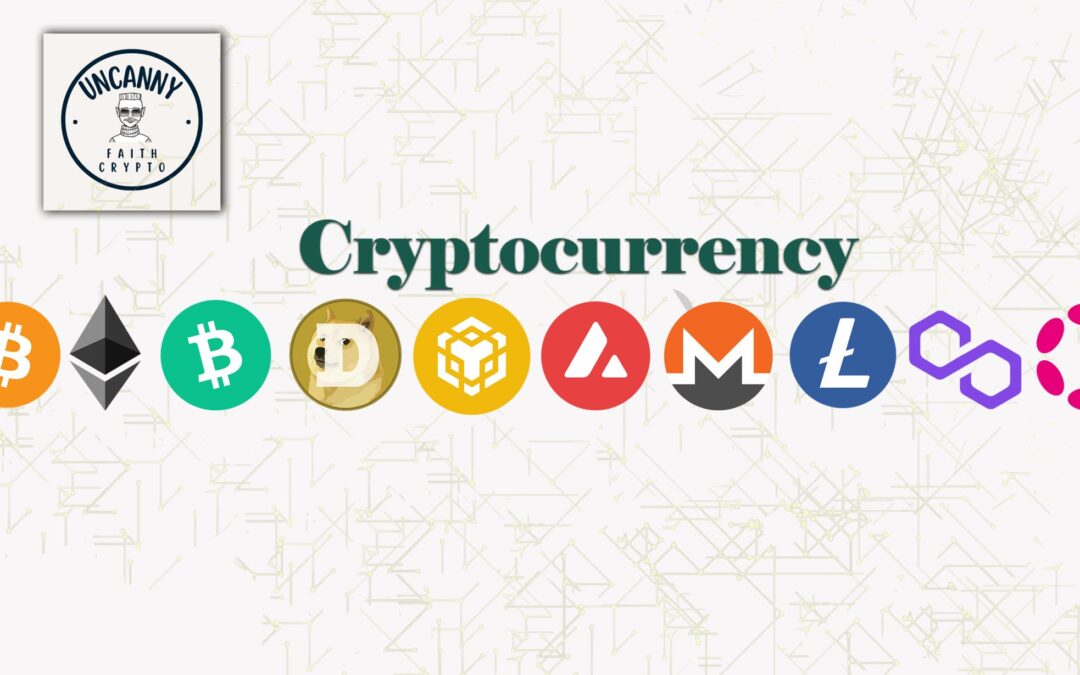
by uncannyfaith | Jan 1, 2025 | Blockchain technology, crypto, Cryptocurrency, Cryptocurrency news and updates, Investing and trading tips
The cryptocurrency landscape is undergoing a seismic shift, and with technological advances coming thick and fast, one buzzword on everyone’s lips is LayerZero. With blockchain innovation moving far beyond where it started over a decade ago, LayerZero is shaping up to be one of the most significant developments in cryptocurrency. But what exactly is LayerZero, and what does it mean for the future of crypto? In this in-depth article, we’ll break down LayerZero’s role in blockchain ecosystems, explore the trends expected to dominate 2025, and provide actionable insights for anyone invested in the future of digital finance.
What is LayerZero? Breaking Down the Basics
Before delving into trends and predictions, let’s first understand LayerZero. At its core, LayerZero is an omnichain interoperability protocol. While that might sound technical, the premise is simple: LayerZero enables seamless communication between distinct blockchain networks. Currently, blockchain ecosystems (e.g., Ethereum, Binance Smart Chain, Solana) often operate in silos, with minimal ability to interact. This lack of interoperability restricts functionality and scalability.
With LayerZero, decentralised applications (dApps) gain the ability to operate across multiple chains, leveraging the benefits of each ecosystem while maintaining seamless integration. For example, a decentralised finance (DeFi) application could use Ethereum for its robust security layer while transacting on Binance Smart Chain for its lower fees. This innovation isn’t just exciting—it’s transformative and positions LayerZero as critical infrastructure for the future of Web3.
Why Does LayerZero Matter?
LayerZero addresses one of blockchain’s most significant pain points: interoperability. Enhancing cross-chain connectivity opens the door to innovation and user scalability like never before. Think of it as the "Internet of Blockchains," where diverse networks communicate fluently for the first time—a game-changer for developers and users alike. As blockchain adoption grows across industries, from logistics to gaming and finance, needing unified systems across multiple ecosystems will only intensify. LayerZero offers the solution by acting as the connective tissue binding these chains together.
Why LayerZero is Pivotal to the Future of Cryptocurrency
The potential use cases for LayerZero span nearly every facet of blockchain technology. Whether you’re a casual crypto enthusiast, a developer, or an enterprise considering blockchain adoption, LayerZero’s advancements could play a role in transforming how cryptocurrencies are used. Beyond interoperability, let’s break down why LayerZero will be pivotal by 2025:
1. DeFi Becoming Multi-Chain
Decentralised finance exploded in popularity in 2020 and 2021. However, it lacked cohesion due to fragmentations between ecosystems. LayerZero bridges these divides, enabling DeFi platforms to operate seamlessly across chains. This could drastically reduce transaction costs for users and create an interconnected financial marketplace.
Imagine transferring assets or liquidity between Ethereum and Avalanche in mere seconds without relying on centralised exchanges (CEXs). LayerZero’s solution eliminates the friction, bringing multi-chain DeFi to reality.
2. Elimination of Bridging Risks
Interoperability today heavily depends on bridging solutions, which often come with security compromises. Bridges, notorious for vulnerabilities, have been linked to hacks totalling billions of dollars. LayerZero bypasses these intermediaries by creating a protocol that eliminates the need for traditional bridges. This innovation makes transfers faster and more secure, addressing one of crypto’s long-standing issues.
3. Seamless dApp Interactions
As decentralised applications evolve, many will require resources that span multiple blockchains. For instance, a gaming platform could use Ethereum’s robust mainnet for in-game asset creation while simultaneously employing Solana’s speed for real-time gameplay. LayerZero equips developers to build applications that efficiently access these cross-chain capabilities.
Key Trends Shaping Cryptocurrency by 2025
As we look ahead to 2025, LayerZero will likely play a crucial role in defining the crypto space. However, it isn’t operating in isolation. LayerZero intersects with broader trends that will influence cryptocurrency’s growth over the coming years. Below, we outline the trends reshaping the future of cryptocurrency and blockchain technology.
1. Increased Focus on Interoperability
Blockchain’s success depends on its ability to move beyond standalone networks. By 2025, interoperability isn’t just likely but necessary. LayerZero’s contribution to the omnichain ecosystem facilitates true blockchain collaboration, allowing a smoother flow of assets, data, and resources across chains.
Expect developers to lean more heavily into cross-chain applications that connect ecosystems like Ethereum, Polkadot, and Solana. Whether it’s NFTs, DeFi, or supply chain solutions, interconnected platforms via technologies like LayerZero will dominate as the backbone of Web3 evolution.
2. Decentralised Identity Solutions
Decentralised identity (DID) systems offer individuals ownership of their data without relying on centralised authorities (e.g., banks or institutions). LayerZero could strengthen DID systems by making identities functional across different blockchain networks–essential for Web3’s mass adoption.
3. Mainstream Adoption of Blockchain Gaming
Blockchain gaming is set to become a $100 billion industry by 2025. Omnichain interoperability could revolutionise how in-game assets are minted and traded between blockchains. With LayerZero’s help, players could transfer NFTs and credits between ecosystems without any friction.
4. Regulatory Standards for Multi-Chain Networks
As governments explore how to regulate digital assets, having standardised frameworks across networks could prove vital. Technologies like LayerZero not only drive innovation but also help regulators track cross-chain transactions, leading to smoother regulatory acceptance.
5. Reduced Gas Fees and Enhanced Scalability
Scalability will remain a pressing concern for blockchains. LayerZero plays a critical role in ensuring that cross-chain applications leverage cost-efficient chains for transactions, resulting in lower gas fees and improved user experiences. By leveraging chains optimally, LayerZero indirectly addresses the long-standing blockchain trilemma of scalability, security, and decentralisation.
Actionable Insights for Businesses and Developers
If you’re considering venturing into the cryptocurrency space, here’s how you can capitalise on the emergence of LayerZero and the trends shaping 2025:
1. Embrace Cross-Chain Development
Developers should explore LayerZero’s technology to make their dApps interoperable. Enhancing cross-chain accessibility prepares your application for broader user adoption as ecosystems grow interconnected.
2. Diversify Blockchain Strategies
Businesses should no longer confine themselves to a single blockchain. By adopting a multi-chain strategy, companies can offer superior scalability and services to their customers.
3. Educate Yourself on LayerZero SDK
Developers can take advantage of LayerZero’s Software Development Kit (SDK), which simplifies cross-chain dApp deployment. Take proactive steps to learn how these tools work and integrate them into your projects for long-term success.
4. Avoid Dependency on Centralised Bridges
Build applications capable of direct blockchain interaction without relying on outdated bridging systems. Avoiding these vulnerability points ensures you’re ahead in designing secure applications.
Frequently Asked Questions (FAQ)
1. What is the LayerZero protocol in crypto?
LayerZero is an omnichain interoperability protocol that enables seamless communication across different blockchain networks. It eliminates traditional barriers of siloed blockchains, helping them interact.
2. How does LayerZero improve blockchain interoperability?
LayerZero allows direct cross-chain messaging, bypassing the need for traditional bridges prone to hacks. It streamlines communication between chains, enabling dApps to operate seamlessly.
3. Are LayerZero and Polygon the same?
No. While Polygon focuses on Ethereum scaling, LayerZero specialises in enabling cross-chain functionality across different blockchains.
4. How can developers benefit from LayerZero?
LayerZero’s SDK makes it easier for developers to create multi-chain dApps. It enhances usability, reduces security vulnerabilities, and expands applications to multiple ecosystems.
Final Thoughts
As the cryptocurrency industry catapults into the future, LayerZero is poised to redefine blockchain’s technological trajectory. Its capabilities as an omnichain interoperability protocol foster multi-chain solutions addressing longstanding challenges like scalability, cross-chain functionality, and security. With blockchain trends pointing towards a more interconnected future, LayerZero’s role in shaping 2025 and beyond is not just noteworthy—it’s inevitable.
For businesses, developers, and cryptocurrency enthusiasts, staying ahead in this dynamic landscape involves understanding and leveraging tools like LayerZero. As the blockchain world becomes increasingly omnichain, those prepared to adapt will seize the endless opportunities this evolution brings. Cryptocurrency’s next chapter is all about connection, and with LayerZero at the helm, the possibilities are limitless.
Ready to explore what LayerZero can do for your blockchain goals? The time to act is now.

by uncannyfaith | Jan 1, 2025 | Cryptocurrency news and updates

According to recent data, only 54% of the 1,702 warnings issued by the United Kingdom’s Financial Conduct Authority (FCA) successfully led to the removal of illegal cryptocurrency advertisements.
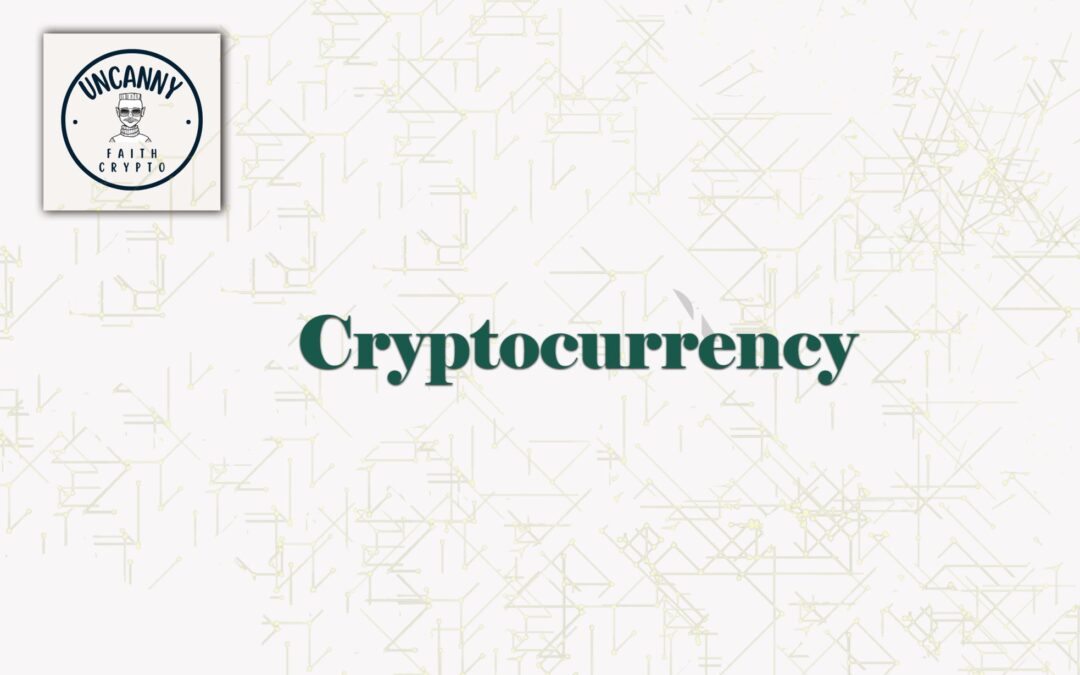
by uncannyfaith | Jan 1, 2025 | Blockchain technology, crypto, Cryptocurrency, Cryptocurrency news and updates, Investing and trading tips
Optimism in Cryptocurrency: Trends and Predictions Shaping 2025
The world of cryptocurrency continues to fascinate and perplex us in equal measure. While critics argue its volatility and risks, crypto enthusiasts remain hopeful about its transformative potential. As we inch closer to 2025, optimism surrounding cryptocurrency is skyrocketing. The conversation is moving beyond short-term trading schemes to discussions about how digital assets and blockchain technology are reshaping our economic and social systems. In this article, we’ll unpack the growing optimism in cryptocurrency, the key trends shaping the sector, and predictions for 2025. Whether you’re an investor, a blockchain developer, or simply crypto-curious, this guide will help you understand the exciting future that lies ahead.
Why Optimism in Cryptocurrency Matters
The cryptocurrency market has proven its resilience time and time again. Despite enduring market crashes and intense scepticism, the sector continues to grow, innovate, and attract new participants. The optimism surrounding cryptocurrency isn’t just wishful thinking—it’s backed by several factors, including technological advancements, increasing institutional adoption, and changing regulatory attitudes. But before diving into the latest trends and predictions for 2025, let’s address the fundamental question: why does optimism in cryptocurrency matter?
Financial systems across the globe are undergoing profound shifts. In regions with unstable economies, cryptocurrencies offer an alternative to traditional banking systems. Platforms like Bitcoin and Ethereum provide borderless, decentralised opportunities that lower entry barriers for millions of unbanked individuals.
Moreover, the adoption of crypto signals a cultural paradigm shift. It’s more than a move toward decentralised money; it’s an embrace of technological innovation, transparency, and digital scalability. An optimistic outlook fuels investment into blockchain-based startups, accelerates adoption by businesses, and encourages collaboration between regulators and tech firms. Optimism is the wind beneath crypto’s wings in the race towards becoming a mainstream financial tool.
Top Cryptocurrency Trends Leading Into 2025
The crypto landscape is transforming at a rapid pace. With new developments occurring daily, let’s hone in on the key trends shaping the market as we approach 2025:
1. Increased Institutional Adoption
One major driver of optimism is the increasing embrace of cryptocurrencies by institutional players. Corporations like Tesla, PayPal, and MicroStrategy have already poured billions into acquiring Bitcoin and other digital assets. By 2025, we expect this trend to skyrocket. Financial institutions, hedge funds, and even nation-states are predicted to integrate blockchain solutions into their operational models.
For example, payment giants like Visa and MasterCard have begun offering crypto services, bridging the gap between traditional finance and digital assets. By 2025, firms are also expected to experiment further with blockchain-backed operational efficiency, from streamlining cross-border payments to automating contracts using decentralised ledger technologies.
2. Regulatory Clarity
For years, uncertainty about government regulations has been one of the biggest challenges for cryptocurrencies. However, there’s a shift on the horizon. Policymakers worldwide are introducing frameworks that focus not on suppressing crypto but on regulating it to ensure safety and compliance.
By 2025, we anticipate clearer global crypto standards. This is crucial as it reassures investors, improves consumer protection, and promotes mainstream adoption. For instance, the European Union’s MiCA (Markets in Crypto-Assets Regulation) legislation, which aims to create a uniform framework, could act as a benchmark worldwide.
3. The Rise of DeFi (Decentralised Finance)
DeFi enthusiasts rejoice—the movement is here to stay. DeFi platforms like Uniswap, Aave, and Compound are reshaping how financial products work by removing intermediaries altogether. By 2025, expect the DeFi sector to permeate everyday business and commerce, unlocking possibilities for loans, savings, and trade with unprecedented efficiency.
While DeFi is thriving, it does face challenges like scalability, security flaws, and regulatory scrutiny. However, with advancements like Ethereum 2.0 improving network efficiency and scalability, many of these challenges will gradually be overcome.
4. NFTs: Expanding Beyond Art
Non-fungible tokens (NFTs) burst onto the scene with jaw-dropping sales of digital art, but their use cases extend far beyond JPEGs. By 2025, the utility of NFTs will mature across industries. Think tokenised real estate, intellectual property rights registered as NFTs, and even virtual healthcare certifications.
Increasing integration with the metaverse and gaming sectors will further normalise NFTs. Governments and brands may adopt NFTs for identity verification, supply chain tracking, and event ticketing, making them an everyday technology.
5. ESG and Green Cryptocurrency Initiatives
Amid rising global awareness regarding environmental, social, and governance (ESG) issues, the crypto community is striving towards “green mining” solutions. Concerns over the energy consumption of Proof of Work blockchains like Bitcoin have driven innovations, leading many projects to adopt Proof of Stake mechanisms, which consume far less power.
By 2025, expect to see renewable energy-powered mining operations and initiatives ensuring carbon neutrality in blockchain networks. This progress is pivotal for maintaining investor confidence and aligning the crypto revolution with global sustainability goals.
6. Crypto Pegged on Real-World Assets (RWA)
An emerging trend is the development of cryptocurrencies tied to real-world assets (RWA), such as tokenised stocks, real estate, or commodities. These assets reduce volatility, the bane of cryptocurrencies, by tethering their value to more stable entities. Tokenisation of physical assets through blockchain will gain traction, fostering a hybrid economy where digital and physical hold hands.
Predictions for Cryptocurrency in 2025
Building on current developments, here’s where we believe the crypto world is heading by 2025:
1. Bitcoin as Digital Gold
By 2025, Bitcoin could firmly establish itself as the go-to hedge against inflation, just as gold has been for decades. With its capped supply and decentralised nature, Bitcoin’s “safe haven” status might attract even more corporate and government-level adoption.
2. Central Bank Digital Currencies (CBDCs) Flourish
While decentralisation drives cryptocurrencies, centralised digital currencies are becoming a reality. Over 130 countries are exploring or piloting CBDCs as of 2023. By 2025, their launch could redefine monetary policies, streamline global trade, and widen crypto adoption.
3. Mass Adoption in Developing Economies
Crypto adoption in regions such as Latin America, Africa, and Southeast Asia is already climbing due to its ability to bypass banking limitations. By 2025, cryptocurrencies could become a lifeline in countries with hyperinflation and failing fiat systems, bringing millions into the global financial fold.
4. Integration with IoT and AI
The fusion of blockchain with advanced technologies like IoT and AI will create unparalleled opportunities. By 2025, cryptocurrencies are expected to power intelligent, automation-driven ecosystems—everything from supply chains and manufacturing to smart cities.
5. Scaling Towards Web3
Web3—the decentralised internet—will transform how we interact online. Blockchain plays a foundational role in making Web3 possible. Expect significant advancements in decentralised data storage, permanent digital identities, and peer-to-peer transactions in cryptocurrency ecosystems by 2025.
FAQs: Answering the Key Questions
1. Are cryptocurrencies a safe investment for 2025?
While cryptocurrencies hold tremendous potential, they remain risky due to volatility. Diversifying your portfolio and conducting thorough research is essential before investing.
2. Will cryptocurrency replace fiat money by 2025?
Cryptocurrencies likely won’t fully replace traditional money by 2025, but they will coexist. Expect hybrid financial systems with growing crypto integration alongside fiat currencies.
3. How are taxes on cryptocurrencies evolving?
With regulatory clarity improving globally, taxes on cryptocurrency holdings and profits will become more streamlined by 2025. Consult tax professionals in your region to stay compliant.
4. What role will blockchain technology play outside of cryptocurrencies?
By 2025, blockchain’s applications will extend to industries like healthcare, logistics, supply chain, and education, delivering transparency and efficiency.
Actionable Tips to Prepare for 2025
- Stay updated on regulatory changes to ensure compliance and safeguard your investments.
- Diversify your crypto holdings; consider exploring NFTs or equities tied to blockchain projects as well.
- Familiarise yourself with emerging trends, like DeFi and RWA-backed tokens.
- Educate yourself on green crypto initiatives and support sustainable projects.
Conclusion: Cryptocurrency 2025 – An Exciting Horizon
The cryptocurrency sector is evolving rapidly, fuelled by innovation, regulation, and growing public interest. From widespread institutional adoption to greener technologies, there’s plenty of optimism for the future. While challenges remain, the trends and predictions shaping cryptocurrency in 2025 point to a revolutionary evolution in finance and beyond.
For those looking to participate in this ever-expanding ecosystem, the keys are staying informed, diversifying investments, and prioritising long-term growth over speculative short-term gains. After all, the future of cryptocurrency isn’t just about profits—it’s about reimagining possibilities.
So, are you ready to embrace 2025 and all the exciting changes it promises in the cryptocurrency space? Let us know your thoughts. 🚀
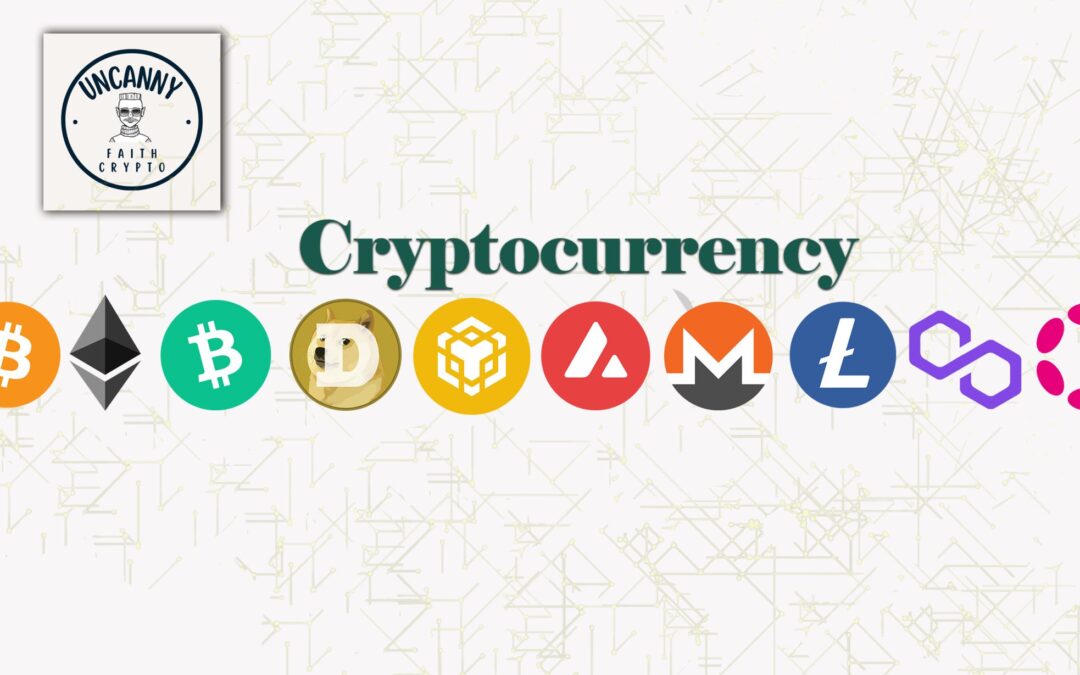
by uncannyfaith | Jan 1, 2025 | Blockchain technology, crypto, Cryptocurrency, Cryptocurrency news and updates, Investing and trading tips
The world of blockchain and cryptocurrency is evolving faster than anyone could have predicted, and at the heart of this evolution lies the quest for scalability. As Ethereum continues to struggle with high gas fees and network congestion, Layer-2 scaling solutions like Arbitrum have risen to prominence. But what does the future hold for this revolutionary protocol? By 2025, Arbitrum could play a pivotal role in shaping the blockchain scalability landscape. In this article, we’ll dive into the key trends, predictions, and developments likely to define Arbitrum and Layer-2 scaling in 2025.
Whether you’re an enthusiast, developer, or investor, stick around to gain insights into the future of decentralised applications (dApps), Layer-2 adoption, and how Arbitrum is set to transform Ethereum scaling.
What is Arbitrum, and Why Is It Important?
Before we dive into what the future holds for Arbitrum, let’s establish what it is and why it’s become such a big deal in the crypto space. At its core, Arbitrum is a Layer-2 scaling solution for Ethereum that leverages Optimistic Rollups to process transactions off-chain while maintaining the security of the Ethereum blockchain.
The Challenges Arbitrum Solves
Ethereum has faced persistent challenges since its inception: high gas fees, slow transaction times, and limited scalability. As blockchain technology tries to cater to real-world applications, these limitations hinder mass adoption. Arbitrum solves these problems by enabling faster and cheaper transactions, making it critical for developers and users alike. Here’s why it matters:
- Lower Gas Costs: By processing transactions off-chain, Arbitrum significantly reduces the cost of using Ethereum-based dApps.
- Scalability: Higher transaction throughput allows Ethereum to support more traffic.
- Security: Arbitrum inherits Ethereum’s robust security guarantees.
Quick Stats on Arbitrum’s Success (as of 2023-2024)
- Over 60% of Ethereum’s Layer-2 market share.
- Locking over $5 billion in Total Value Locked (TVL) from DeFi projects.
- Hundreds of dApps and major integrations (including Uniswap and Aave).
Arbitrum’s Key Trends in 2025
As we look to 2025, Arbitrum will likely push the boundaries of blockchain scaling. Here’s a look at the top trends and predictions shaping its future.
1. Mainstream Adoption of Layer-2 Solutions
By 2025, it’s expected that the adoption of Layer-2 solutions like Arbitrum will reach unprecedented levels. This will be propelled by several factors:
- Rising Gas Fees on Ethereum Layer-1: Despite Ethereum’s transition to Proof-of-Stake via Ethereum 2.0, scalability remains limited on Layer-1.
- Institutional Interest: Financial institutions, gaming companies, and Web3 developers are increasingly favouring scalable solutions to build their products. By offering fast and cost-effective transactions, Arbitrum will likely become the go-to choice for these sectors.
We’re already seeing a shift towards Layer-2 in 2023-2024, but by 2025, this shift could become the norm rather than the exception. Companies will target Layer-2 directly for projects, bypassing Ethereum Layer-1 for most practical use cases.
2. Interoperability and Multi-Chain Collaboration
If there’s one thing we’ve learned from the blockchain space, it’s that no chain will rule them all. Instead, interoperability will facilitate a multi-chain future, and Arbitrum is positioning itself as an important part of that ecosystem.
By 2025:
- Expect bridges between Arbitrum and other Layer-1 networks, such as Solana, Avalanche, and Binance Smart Chain, to become faster and more secure.
- Protocols like LayerZero or Wormhole will enable seamless cross-chain transactions, further increasing Arbitrum’s utility in a complex, interconnected digital economy.
- DAO Collaborations: Inter-chain DAOs and DeFi projects will flock to Arbitrum due to its layer-2 efficiency.
For developers and businesses, this interoperability could mean building dApps on Arbitrum and easily leveraging the liquidity and functionality of other platforms—a true game-changer for blockchain usability.
3. Decentralised Finance (DeFi) Expansion
Arbitrum is already home to a thriving DeFi ecosystem, but by 2025, this sector is expected to explode as more projects build on Layer-2 networks. Key predictions include:
More Complex DeFi Protocols
With scalability no longer a bottleneck, DeFi on Arbitrum will introduce smarter, more sophisticated protocols. From multi-layer liquidity aggregation to decentralised derivatives trading, innovation is poised to flourish.
Lower Barriers to Entry
By reducing transaction costs, Arbitrum will lower the barriers of entry for DeFi participants. Micro-transactions and small-scale lending protocols will open up avenues for users in regions with stricter financial restrictions.
4. Improved User Experience (UX) and Wallet Integrations
2023 and 2024 already showed immense progress in wallet integrations and reducing blockchain complexity. But by 2025, expect users interacting with Arbitrum-based applications to forget they’re using blockchain altogether. Here’s what the future holds for UX:
- One-Click Solutions: Wallets and payment solutions will integrate more deeply with Arbitrum, making the onboarding process nearly seamless.
- Voice-Activated Commands: With advancements in AI and voice search adoption, expect future wallets to integrate voice commands for transactions, boosting accessibility.
- Cheaper Meta-Transactions: Users could perform blockchain interactions with minimal fees hidden under user-friendly interfaces.
5. Decentralisation and Governance Improvements
By 2025, the governance structure of Layer-2 solutions like Arbitrum will become even more decentralised. Arbitrum already uses a DAO (Decentralised Autonomous Organisation) for decision-making, but the future promises expanded participation models, including quadratic voting.
This will help balance power among network participants, creating a truly decentralised economy where users have more control over ecosystem-wide developments.
Predictions for Arbitrum in 2025: A Crystal Ball Glimpse into the Future
Let’s summarise the major predictions for Arbitrum’s role in blockchain by 2025:
- Adoption Beyond DeFi: Beyond finance, expect applications in supply chain management, digital identity verification, and gaming to favour Arbitrum over Ethereum Layer-1.
- Enhanced Privacy Features: As privacy concerns grow globally, Arbitrum may integrate or collaborate with privacy-focused solutions like zk-proofs.
- EIP Innovations: New Ethereum Improvement Proposals designed for Layer-2 protocols will directly boost Arbitrum’s speed and security.
- Corporate Collaborations: Mainstream companies (e.g., gaming studios, NFT platforms, or even central banks using CBDCs) could integrate Layer-2 scaling solutions.
Actionable Insights for Developers & Investors
For Developers:
- Start building on Arbitrum early to take advantage of its loyal user base and low entry costs.
- Leverage interoperability features to create multi-chain dApps.
For Investors:
- Keep an eye on projects migrating to or debuting on Arbitrum.
- Arbitrum’s ecosystem tokens could exceed their Layer-1 counterparts in value growth by 2025.
Frequently Asked Questions (FAQs)
1. What makes Arbitrum different from other Layer-2 solutions?
Arbitrum uses Optimistic Rollups for security and scalability, but it also stands out due to its developer-friendly tools and large ecosystem.
2. Is Arbitrum secure?
Yes, Arbitrum inherits Ethereum’s security while processing transactions off-chain. It offers a blend of scalability and safety.
3. How does Arbitrum lower transaction costs?
By processing transactions off-chain and batching them together before posting to Ethereum Layer-1, Arbitrum drastically reduces gas fees.
Final Thoughts: Is Arbitrum the Future of Layer-2 Scaling?
By 2025, Arbitrum’s innovation in Layer-2 scaling will not only transform Ethereum but also serve as a cornerstone of the blockchain industry as a whole. Through enhanced adoption, interoperability, and decentralisation, Arbitrum is not just a sidekick to Ethereum—it’s a protagonist in its own right.
Scalability may no longer be a limiting factor for blockchain technology, paving the way for mass adoption and new use cases we’ve yet to envision. From decentralized finance to gaming and beyond, Arbitrum looks to be at the forefront of this next digital revolution. Are you ready to be part of it?
Optimised for SEO: Key terms like "Arbitrum in 2025," "Layer-2 scaling predictions," and "Ethereum scaling solutions" have been organically used to help this article rank highly for relevant searches.

